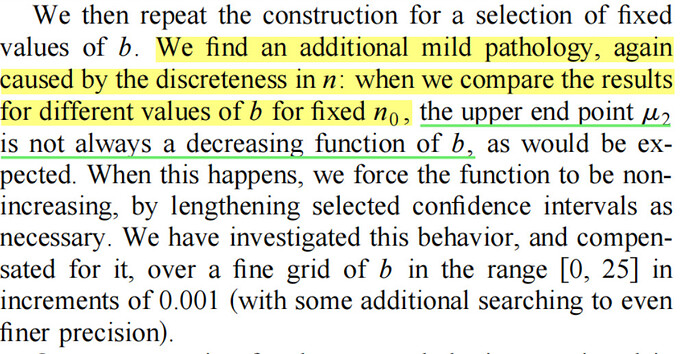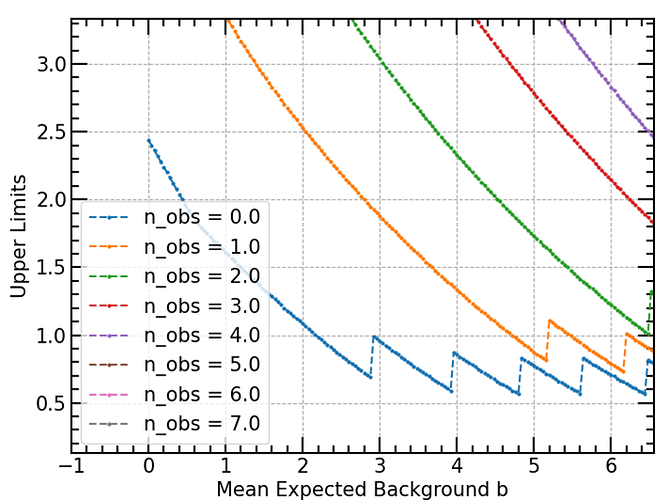Hi, another question I found is I check the result by using root TFeldman but I found some results are different with Feldman Paper. I don’t know what happend. The upper figure is from root TFeldman and the lower figure is from Feldman paper.
Hi, I’m sorry I sumbited wrong figure. I have resumbited, please check it agian.
Still, both posted images are in fact the same file (with SHA1 hash 5a4a249629a652bd5f15f4c8c903db69ddc1f742). Please, double-check.
Cheers,
J.
Sorry, how about now?
Now they are indeed different. However, I am sorry I cannot help you, but I am sure @moneta can.
Cheers,
J.
Thank you for your help!
Dear @moneta,
May you help me to check what happend? Thank you !
@moneta ,Sorry to bother you again, I have checked some other materials but I can’t still find why there’re some difference. Could you please check it ?
Hi ,
I suspect a numerical problem for the case nobs=0 in the TFeldmanCousins class. I will investigate it. However, you should really be careful for using this class for setting limits when you observe much less events than expected.
What is normally used for setting limits in this case (e.g. at LHC) is the CLs method.
Lorenzo
Hi,
Thank you very much!I‘ll set limits carefully! ![]()
I think the difference is also caused by some special procedure applied in the Feldman-Cousins paper (see page 8 of https://arxiv.org/pdf/physics/9711021.pdf)
Lorenzo
Hi,
Could you explain what the specific difference is between Feldman-Cousins paper and root in this part?
Do you mean that ROOT don’t deal with this small dip like Paper as follows ? And so that’s the reason for the filpping occurs? In other words, there are some numbers are different between Paper and ROOT because of that. Am I right? (The bottommost figure is drew by ROOT)
Hi,
The pathologies are happening in the Neyman construction used to compute the interval. In ROOT we don’t to anything special, while in the paper they have some special treatment. As I said before these values are not interested, because limits in those regions do not make much sense, you are observing values n much lower than the expected background. For these reason all the LHC experiments use the CLs procedure to report upper limits.
Lorenzo
Ok, I got it. Thank you for your answer very much!
Best regards,
Jasmine
This topic was automatically closed 14 days after the last reply. New replies are no longer allowed.



